GroupWise to Exchange 2007 - Interoperability and transformation (Part 8)
 GroupWise to Exchange 2007 - Interoperability and transition (Part 1)
GroupWise to Exchange 2007 - Interoperability and transition (Part 1)
 GroupWise to Exchange 2007 - Interoperability and transition (Part 2)
GroupWise to Exchange 2007 - Interoperability and transition (Part 2)
 GroupWise to Exchange 2007 - Interoperability and transition (Part 3)
GroupWise to Exchange 2007 - Interoperability and transition (Part 3)
 GroupWise to Exchange 2007 - Interoperability and transformation (Part 4)
GroupWise to Exchange 2007 - Interoperability and transformation (Part 4)
 GroupWise to Exchange 2007 - Interoperability and transformation (Part 5)
GroupWise to Exchange 2007 - Interoperability and transformation (Part 5)
 GroupWise to Exchange 2007 - Interoperability and transformation (Part 6)
GroupWise to Exchange 2007 - Interoperability and transformation (Part 6)
 GroupWise to Exchange 2007 - Interoperability and transformation (Part 7)
GroupWise to Exchange 2007 - Interoperability and transformation (Part 7)
Nathan Winters
Migrate workstations or servers, XP or 2003
Before diving into the migration process, we need to introduce a little about what to run migration tools.
We used XP on the migration workstation for two reasons. The first reason is in a VM lab, we used an XP-based virtual computer to test Outlook and GroupWise on it. Secondly, it does not require server or server hardware.
If you want to use Windows Server 2003 Server, the prerequisites are similar, but the download locations may be slightly different in some components, such as DOT.NET with separate operating system versions.
- Download and install x86 DOT.NET Framework 2.0 Service Pack 1.
- Download Windows PowerShell for Windows Server 2003.
- If you need it, download MMC 3.0 for Windows Server 2003 here. MMC 3.0 is included in SP2.
- You can download Windows Server 2003 SP2 AdminPak here.
- The Windows Server 2003 SP2 AdminPak may prompt you for SP2 CD during the installation process. Perhaps like us, you downloaded SP2 via Windows Update, the simplest solution to this problem is to "downgrade" back to SP1, and install SP1 AdminPak from here.
When you re-use SP2, AdminPak will be upgraded.
Before start
We will introduce important steps, in the right order, and give tips that we have encountered during the operation.
Here are some assumptions.
- First acknowledge that the source GroupWise and target Exchange systems are perfectly suited to each other.
- Assuming that you have followed the previous seven sections of this series, you have backed up your Active Directory user objects with MS Exchange Connector for Novell GroupWise.
There are many different ways you can redirect user objects in Active Directory, but the two most common migration scripts from NDS to AD are Quest's migration to NDS and AD from the NDS. The importance of using the MS Exchange Connector is that it creates Active Directory user objects based on the GroupWise folder and not the NDS.
Note, GroupWise maintains the root directory separate from NDS. This is very similar to Exchange 5.5 on NT 4.0. If you backup your Active Directory objects based on NDS, there will be a phase in the migration process where GroupWise objects and Active Directory objects (previously considered NDS objects) are matched. together to create a separate set of target objects.
This consolidation can cause some problems. Imagine a scenario where NDS and GW objects are created for Karen Smith, who then becomes Karen Jones after she gets married. Typically, the GroupWise object will be updated, because the email address is present. The NDS object may or may not be updated, which makes these objects not merge.
We will look at similar issues where GroupWise objects are misspelled, or where hyphenated names or other names are managed differently between NDS and GW.
Objects that fail to merge are written with a utility named AD Object Merge.
Since we have provisioned our Active Directory object directly from the GroupWise directory, this step becomes much simpler.
Quest software suite
A set of products and tools are included in the Quest software:
- Directory Exporter
- The Active Directory Object Merge Tool
- Administrator Driven Batch Migrator
- Self-Service Desktop Migrator
- Quest Log File Viewer
Typically, each of these tools performs a specific step in the migration process, but there are some that take more steps.
Everything starts with the Directory Exporter. This utility needs to be run first.
When you run Directory Exporter, this program prompts you for the GroupWise mailbox and password, as well as the Post Office TCP / IP address or hostname running GWIA, finally the Domain path as shown in Figure 1 :
Note: You must have a GWIA in the GroupWise Domain otherwise the Quest software will not work.
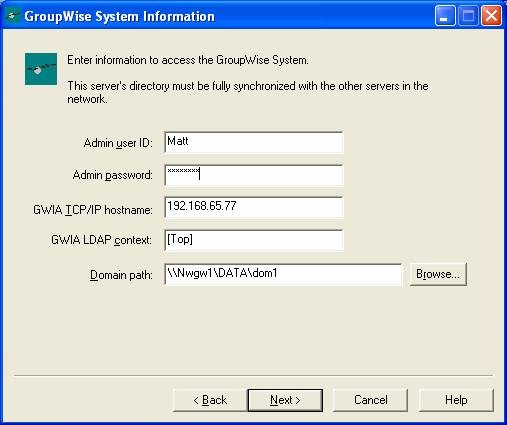
Figure 1: Enter GroupWise information in Directory Exporter
Then Directory Exporter will connect to GroupWise and extract the Address Book as shown in Figure 2.
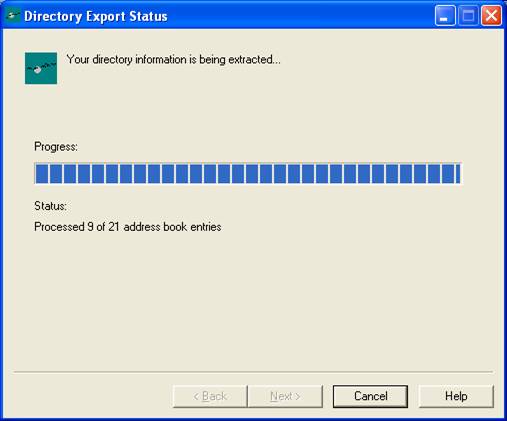
Figure 2: Directory Exporter is connecting to GroupWise to read the address book information
The stages in the migration process are shown in Figure 3.
File name
Path
UsersToMigrate.csv
C: Program FilesQuest SoftwareGroupWise Migrator for Exchange
UsersToMerge.csv
C: Program FilesQuest SoftwareGroupWise Migrator for Exchange
GroupsToProvision.abk
C: Program FilesQuest SoftwareGroupWise Migrator for Exchange
AddressTranslation.csv
C: Program FilesQuest SoftwareGroupWise Migrator for ExchangeShared
Table 1: Four output files of Directory Exporter
These four files are the main file set. The best advice is to copy them to a safe location. There is a lot of variation in the content of these files and a backup copy will really be useful for you right now.
During the migration process, you will work with a small set of data from the directory export because then you will run the migration process in the blocks. For each block, they will remove the user executed from the migration process from the file, or work with a separate set of migration files for each block.
Three of the four files are almost the same.
- UsersToMigrate.csv
- UsersToMerge.csv
- AddressTranslation.csv
UsersToMigrate.csv has an extra header column in column L, SearchKey but with this exception, files and content are exactly the same.
The contents of these three files allow you to merge, migrate, and perform administrative functions on the same set of mailboxes for each migration phase.
The trick with manipulating these files is to always work with a copy UsersToMigrate.csv , then save it twice as UsersToMerge.csv and AddressTranslation.csv .
If you use a separate set of migration files, call them eg Phase-1-Migrate , Phase-1-Merge and Phase-1-Translate.csv
Merge Active Directory object - AD Object Merge
When you have a complete export directory, we need to perform an AD object Merge. This is to ensure that any Active Directory user object is properly linked to the corresponding GroupWise mailboxes, and needs to be large, as we mentioned above, most resources Frequently, Active Directory objects are NDS and not GroupWise.
Let's take a look at the UsersToMerge.csv file
There are two fields to consider: ObjType and NDSUsername.
ObjType lists different values, the value 0 corresponds to a user or an external entity, 2 is a distribution group and 3 is a GroupWise resource. There are 3 common object types in the export directory.
Note that the object types in 2 and 3 do not have NDSUsername values.
The contents of the NDSUsername attribute are matched to the User logon name (pre- W indows 2000): field on the User Account tab in Active Directory, as shown in Figure 4.
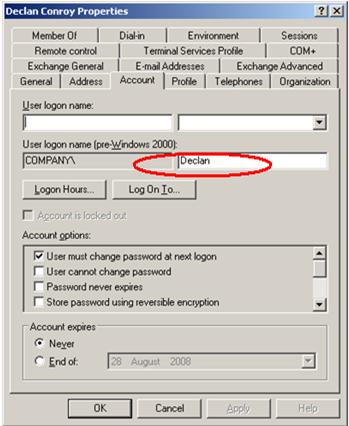
Figure 4: Login field of Pre-Windows 2000
The export directory may also include objects synchronized with the connector from Exchange. Our export directory contains 21 objects.
- 11 users
- 6 distribution group
- 2 resource mailbox
- 1 external entity
- 1 Exchange user.
When running the Active Directory Object Merge Tool , after providing the program with a source file containing our list of objects to merge, we will have three options to find users in Active Directory, as shown. in Figure 5.
- Find objects by Pre-Win2K username
- Find users from Quest NDS Migrator database
- Find objects by attribute
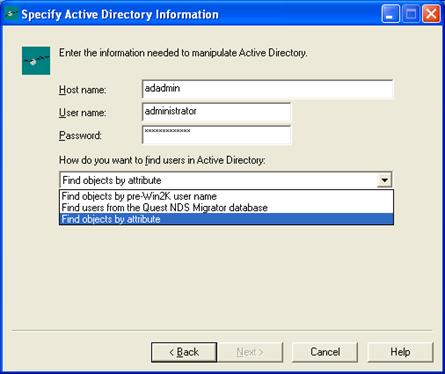
Figure 5: Select how to find users in Active Directory
If simply executing an AD object Merge using the pre-Win2K default username, any object without the popular NDSUsername attribute will fail during the merge process.
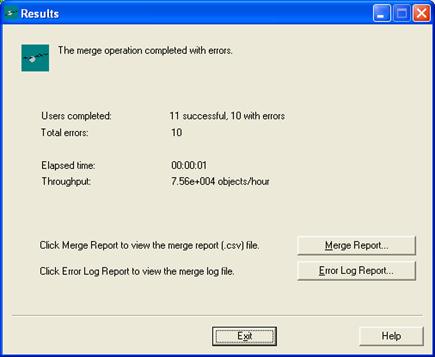
Figure 6: Merge Tool results panel
If we check the contents of the Merge Report, we can see that all users with the NDSUsername attribute are merged, but many of them still fail.
There are two options here. We can live with these numbers as they grow and understand them, or we can create a data message in .csv files to allow us to delete.
For example, if we delete the distribution groups and exchange users from the UsersToMerge.csv file, then there will be only 14 objects left.
- 11 users,
- 2 resource mailbox
- 1 external entity
Next, the simplest solution is to migrate the NDSUsername field to these objects by using values taken from Active Directory objects.
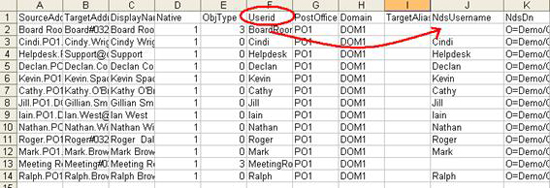
Figure 7: Common NDSUsername field
It should be noted here that User login names does not contain spaces, where GroupWise mailboxes are executing, for the Board Room example in GroupWise to become BoardRoom in Active Directory so we need to remove these spaces.
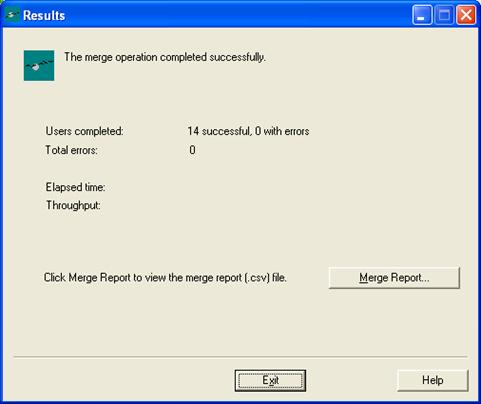
Figure 8: Merge the Active Directory object
Conclude
Here, we have introduced you to workstation migration, besides providing information about the Quest suite and completing the first two phases of the migration process using Quest tools. . In the next few articles, we will complete the process using the Provisioning of Distribution Groups.
You should read it
- GroupWise to Exchange 2007 - Interoperability and transformation (Part 5)
- GroupWise to Exchange 2007 - Part 2: Ability to collaborate and convert
- GroupWise to Exchange 2007 - Part 1: Ability to collaborate and convert
- Message queues in Exchange 2007
- Transfer Exchange 2003 to Exchange 2007 (P.7)
- Transfer Exchange 2003 to Exchange 2007 (Part 2)
- Transfer Exchange 2003 to Exchange 2007 (P.4)
- Switch from Exchange 2000/2003 to Exchange Server 2007 (part 1)
May be interested
- Check mail in Exchange 2007 (Part 2)
 in part one of this article we looked at the default configuration of message tracking within exchange 2007 and how to change those settings using powershell cmdlets. you can remember those major changes in exchange 2007 mail checking on the server
in part one of this article we looked at the default configuration of message tracking within exchange 2007 and how to change those settings using powershell cmdlets. you can remember those major changes in exchange 2007 mail checking on the server - Transfer Exchange 2003 to Exchange 2007 (Part 2)
 in this article, we will continue the process to build the exchange 2007 system starting with the installation of the hub transport and client access server.
in this article, we will continue the process to build the exchange 2007 system starting with the installation of the hub transport and client access server. - Switch from Exchange 2000/2003 to Exchange Server 2007 (part 1)
 how is the conversion from exchange server 2000 or exchange server 2003 to exchange server 2007 done? you will have to move data from every available exchange server in the exchange organization to the new exchange 2007 servers after having them shut down.
how is the conversion from exchange server 2000 or exchange server 2003 to exchange server 2007 done? you will have to move data from every available exchange server in the exchange organization to the new exchange 2007 servers after having them shut down. - Managing Resource Mailboxes in Exchange Server 2007 (Part 2)
 in the previous part of this series, we learned how to create a resource mailbox and how to enable it so that a user can access it through the add-mailboxpermission cmdlet. at that time, we still couldn't do this through the exchange management console, but today with exchange server 2007 service pack 1
in the previous part of this series, we learned how to create a resource mailbox and how to enable it so that a user can access it through the add-mailboxpermission cmdlet. at that time, we still couldn't do this through the exchange management console, but today with exchange server 2007 service pack 1 - Transfer Exchange 2003 to Exchange 2007 (Part 3)
 in the previous two sections, we installed the first exchange 2007 servers, combining hub transport and client access servers in an exchange 2003 environment.
in the previous two sections, we installed the first exchange 2007 servers, combining hub transport and client access servers in an exchange 2003 environment. - Transfer from Linux Mail Server to Exchange Server 2007 (Part 1)
 in exchange server 2003, we can use the exchange migration wizard to switch from an imap4 running environment to active directory and exchange server 2003. in this article, however, i don't want to talk about exchange server 2003 but instead. gi
in exchange server 2003, we can use the exchange migration wizard to switch from an imap4 running environment to active directory and exchange server 2003. in this article, however, i don't want to talk about exchange server 2003 but instead. gi - Discover EMC in Exchange Server 2010 (Part 2)
 in the previous article, we learned some new features in exchange server 2010, including: high availability, archiving, federation and sharing.
in the previous article, we learned some new features in exchange server 2010, including: high availability, archiving, federation and sharing. - Installing Exchange 2007 (Part II)
 installing exchange is not difficult. however, exchange 2007 has some changes in the installation program that are a bit surprising. part 2 of this series will take you to the installation options of the gui and gui
installing exchange is not difficult. however, exchange 2007 has some changes in the installation program that are a bit surprising. part 2 of this series will take you to the installation options of the gui and gui - Removing the first Exchange 2003 server (Part II)
 in part 1 of this series, we looked at the steps needed to copy some important system folders to a new exchange server that is also installed in the administrative group. we also provide the necessary steps to ensure
in part 1 of this series, we looked at the steps needed to copy some important system folders to a new exchange server that is also installed in the administrative group. we also provide the necessary steps to ensure - Mobile messaging in Exchange 2003 - Part 4: Access group GALs from mobile devices with GAL Lookup
 we went to part 4 of this series to explore mobile mail together using exchange 2003 server sp2 and windows mobile 5.0 devices with the messaging and security feature pack installed. in part 3, we introduced how to install, configure and exchange server activesync web administration administration tools. in this part 4 &
we went to part 4 of this series to explore mobile mail together using exchange 2003 server sp2 and windows mobile 5.0 devices with the messaging and security feature pack installed. in part 3, we introduced how to install, configure and exchange server activesync web administration administration tools. in this part 4 &










 Access and use shared email addresses - Part 1
Access and use shared email addresses - Part 1 Managing Receive Connector - Part 1
Managing Receive Connector - Part 1 Access and use shared email addresses - Part 2
Access and use shared email addresses - Part 2 Managing Receive Connector - Part 2
Managing Receive Connector - Part 2 Installing and configuring Exchange 2007 from the command line utility - Part 1
Installing and configuring Exchange 2007 from the command line utility - Part 1 Managing Public Folder replication and client permissions with scripts - Part 1
Managing Public Folder replication and client permissions with scripts - Part 1